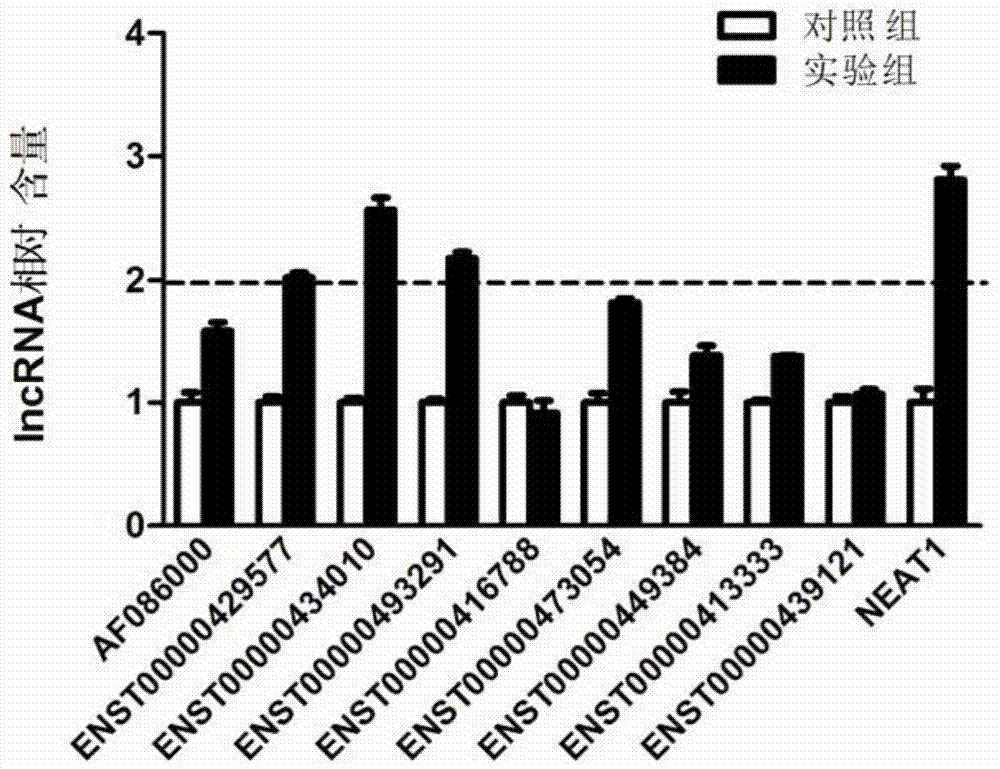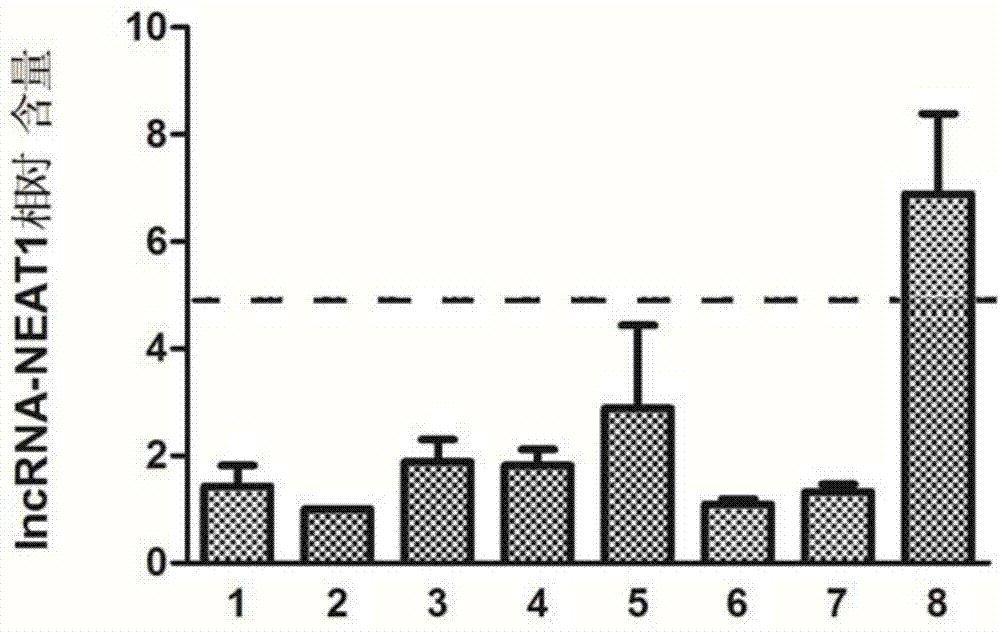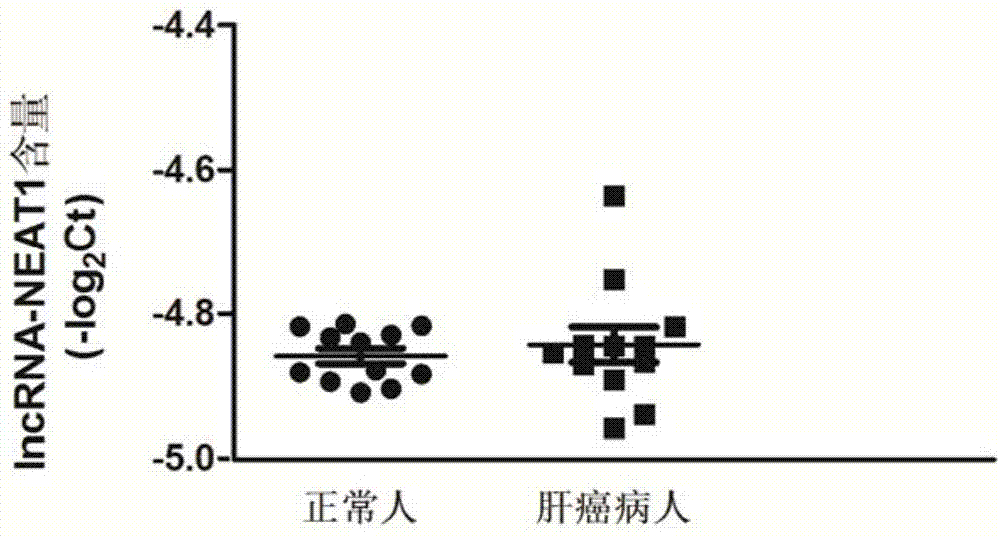Kit for detecting IncRNA-NEAT1 in serum and application thereof in liver cancer serological diagnosis
A detection kit and detection reagent technology, applied in the field of medical biological detection, can solve the problems that the value of lncRNA-NEAT1 tumor serological diagnostic markers has not yet been reported in the literature
- Summary
- Abstract
- Description
- Claims
- Application Information
AI Technical Summary
Problems solved by technology
Method used
Image
Examples
Embodiment 1
[0045] Example 1: Screening and identification of lncRNA-NEAT1
[0046] In the early stage, we used a high-throughput lncRNA chip to screen lncRNAs related to liver cancer stem cells, and selected 10 lncRNAs with the most significant changes from the screened lncRNAs, and then compared the lncRNAs in liver cancer stem cells enriched from Huh7 liver cancer cells. The expression was verified by PCR, and it was found that lncRNA-NEAT1 expressed the highest in liver cancer stem cells (see figure 1 ).
[0047] It is currently believed that tumors originate from tumor stem cells, so these results suggest that lncRNA-NEAT1 may play a role in the early stages of malignant tumors including liver cancer, and also suggest that it may have a certain application value in tumor diagnostic markers.
Embodiment 2
[0048] Example 2: Collection and processing of serum samples and extraction of small RNAs therein
[0049] (1) Serum sample collection: Collect about 4ml of peripheral blood from patients with hepatocellular carcinoma before operation, put it into an anticoagulant tube containing EDTA, and let it stand for about 1 hour.
[0050] (2) Serum sample processing: the collected peripheral blood samples were centrifuged at 4000 rpm at 4°C for 10 min, the supernatant was taken and packed into EP tubes, and stored at -80°C.
[0051] (3) Extraction of small RNAs in serum: 350 μl of each serum sample was taken, and according to the mirVana purchased from Ambion, TM PARIS TM Kit to extract small RNA.
[0052] (4) Reverse transcription into cDNA: take the same amount of RNA from each sample, and perform reverse transcription with random primer N6. According to 5×M-MLV RT Buffer 5 μl, M-MLV Reverse transcriptase 1 μl, rRNasin 0.5 μl (Promega Company), dNTPs 1 μl, random primer N61 μl, ext...
Embodiment 3
[0053] Example 3: Primer Design and Screening
[0054] (1) Primer design: The full-length sequence of lncRNA-NEAT1 (NR_028272.1) was found by NCBI, and 8 pairs of upstream and downstream primers for Real-time PCR were designed using Primer Premier 5 software for the sequence of lncRNA-NEAT1 (as listed in Table 1. Shown), Invitrogen was responsible for the synthesis of primers.
[0055] Table 1: Eight pairs of primers designed to detect lncRNA-NEAT1 in serum
[0056]
[0057]
[0058] (2) Primer screening: SYBR Premix Ex Taq from TaKaRa Company TM Reagents and the ViiA7Dx real-time quantitative PCR instrument of Applied Biosystems in the United States were used to carry out the PCR reaction according to the following system:
[0059]
[0060] PCR conditions:
[0061]
[0062] According to the above Real-time PCR conditions, 8 pairs of lncRNA-NEAT1 primers were detected by using the reverse transcription products of 3 previously prepared serum samples. Two replic...
PUM
 Login to View More
Login to View More Abstract
Description
Claims
Application Information
 Login to View More
Login to View More - R&D
- Intellectual Property
- Life Sciences
- Materials
- Tech Scout
- Unparalleled Data Quality
- Higher Quality Content
- 60% Fewer Hallucinations
Browse by: Latest US Patents, China's latest patents, Technical Efficacy Thesaurus, Application Domain, Technology Topic, Popular Technical Reports.
© 2025 PatSnap. All rights reserved.Legal|Privacy policy|Modern Slavery Act Transparency Statement|Sitemap|About US| Contact US: help@patsnap.com



